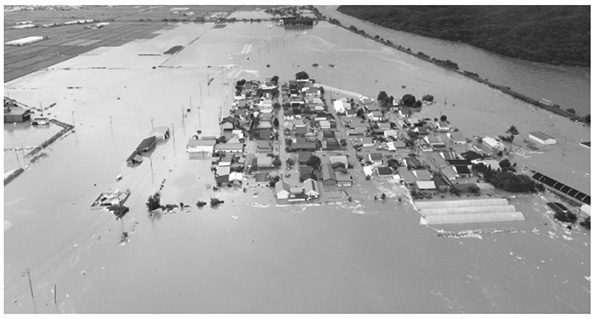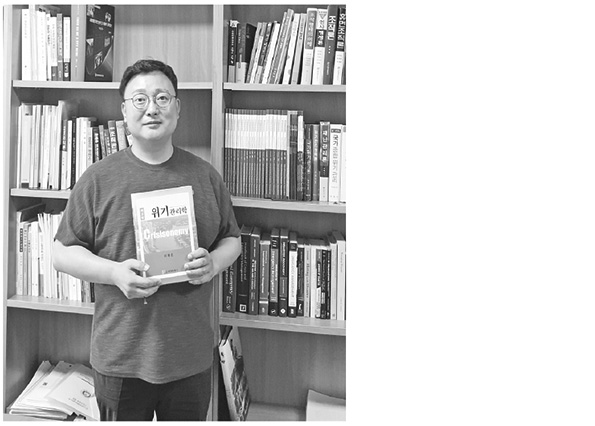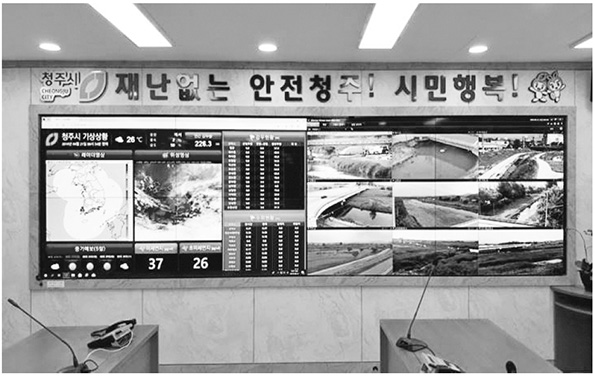Extreme and unusual weather events are occurring all over the world including floods in East Asia and heat waves in Europe. Earth is getting hotter because of global warming, so unusual weather events are occurring all over the world. Last month Korea suffered from the flood disasters. Noticeably, this year’s rainy season recorded the longest duration and the latest end date. The 2020 rainy season lasted for 54 days from June 24 to the end of August. This year’s rainy season was longer than the 2013 rainy season which lasted for 49 days. In addition, the 2020 rainy season ended after Korea Independence Day, August 15. This is later than the previous record of August 10,1987.
CBT met with Lee Jae-Eun, a professor of public administration who is the director of the National Crisis & Emergency Management Research Institute at Chungbuk National University. CBT enquired about dealing with the current rainy season situation.
1. Could you please introduce the National Crisis & Emergency Management Research Institute at Chungbuk National University?
“The National Crisis & Emergency Management Research Institute is the first and only crisis management research institute in Korea, and it has been operational since 2006. Our institute holds more than 120 academic seminars globally and is the hub of Korea crisis management and the headquarters of the International Association for Crisis Studies. We focus our studies on natural disasters including national life safety crisis, the core infrastructure crisis, traditional security crisis, and the public conflict crisis. Furthermore, we have defined disasters as events violating human dignity and realization. Our center is researching and making efforts to prevent, prepare, respond and restore in case of any given crisis in various fields.”
2. CBT would like to know more about the government disaster management system.
“Korea has a national crisis management institute at Cheong Wa Dae. In addition, disaster management headquarters is in the Ministry of Interior and Safety, which oversees the nation’s disasters. Typically, Korea has a centralized crisis management system. In the case of local governments, disaster safety offices are the main force in cities and provinces to manage flood damage.”
3. Korea was recently struck by an unpredictable natural disaster. What was the government’s response and what needs to be improved in the future?
“The extreme rainy season was out of the range of things that the government expected. According to custom, a heavy rain watch will be issued if the precipitation for three hours is 90 mm or precipitation for 12 hours is 180 mm. Surprisingly, this year the precipitation was 90mm per hour. This is totally out of the range we anticipated. The 2020 flood has two noticeable characteristics. First, it was a very long rainy season with a lot of precipitation. An extraordinary weather event occurred without an appropriate protocol being in place. The problem is that our country has an aging infrastructure. Natural phenomena have become supersized but our country’s embankments, riverbanks, dams, and reservoirs were built about 50 years ago. The aging infrastructure couldn't handle the supersized event. Therefore, facilities across the country should improve to withstand new weather disasters. In addition, Korea is an aging society, especially in the case of rural areas where it is a super high aged society. More than 60 percent are over 65 years old. They are less cognizant and less able to evacuate. Therefore, the flood caused many casualties among the elderly. In addition to disaster warning text messages sent to senior citizens, a new and fast delivery method is required. Overall, the exact amount of the damage has not yet been calculated but this year flood damage will be worse and more expensive than the previous years. However, if we update the aging facilities and prepare thoroughly, we can respond appropriately even if bigger disasters come in the future.”
4. What method should the government employ to prepare to cope with the disaster and what do we need to do?
“First of all, we need to educate the professional workforce to manage the disaster crisis. Realizing the lack of the professional workforce in Korea, Chungbuk National Crisis & Emergency Management Research Institute established a cooperative crisis management course for the first time in Korea. Second, a local government disaster management system should be established beyond the central government. Third, the citizens should be made deeply aware of the seriousness of the risk of disaster. In addition, the Korea National Life Safety Center has been holding crisis management competitions since 2007. The competition topic is to identify disasters or risks that occur in our daily lives. I recommend that our students participate in this annual competition.”
CBT also interviewed Go Eun-Hae, a researcher of Disaster Safety Management Headquarters in Cheong-Ju to figure out the details of disaster control measures.
5. How does the Cheong-Ju City government handle the disasters?
“The disaster Safety Management Headquarters in Cheong-Ju are operating departments of downpours, landslides, heat waves, and floods separately to cope with them more effectively. Specifically, the department of floods is progressing to modernize the water distribution system. This year, we inspected not only the water pumps but also 37 fire-fighting disaster areas. Also, we are seriously promoting flood insurance among citizens. The department of landslides is checking the vulnerable areas and operating a landslide prevention group. In addition, not only did we install 30 sun shelters because of an incoming heat wave but we are also managing those who are vulnerable to heat waves. We are doing our best to cope with the disasters.”
CBT met professor Lee and researcher Go to figure out the actions and measures that we may take in response to disasters.
Nowadays, the climate crisis is threatening our lives. The more human production activities increase, the more green-house gases occur. As a result, there are so many climate crisis all around the world. As natural disasters have become a serious problem, they affect the world including our nation. The government should double-check not only the most vulnerable places but also people. To prevent further disasters, individual and national countermeasures should be prepared.
By Yoo Seong-woo | sw38@cbnu.ac.kr
By Baek Han-na | backna@cbnu.ac.kr
By Yang Jin-a | 2016020101@cbnu.ac.kr


 All
All Feature
Feature






 Baek Han-na
Baek Han-na 











